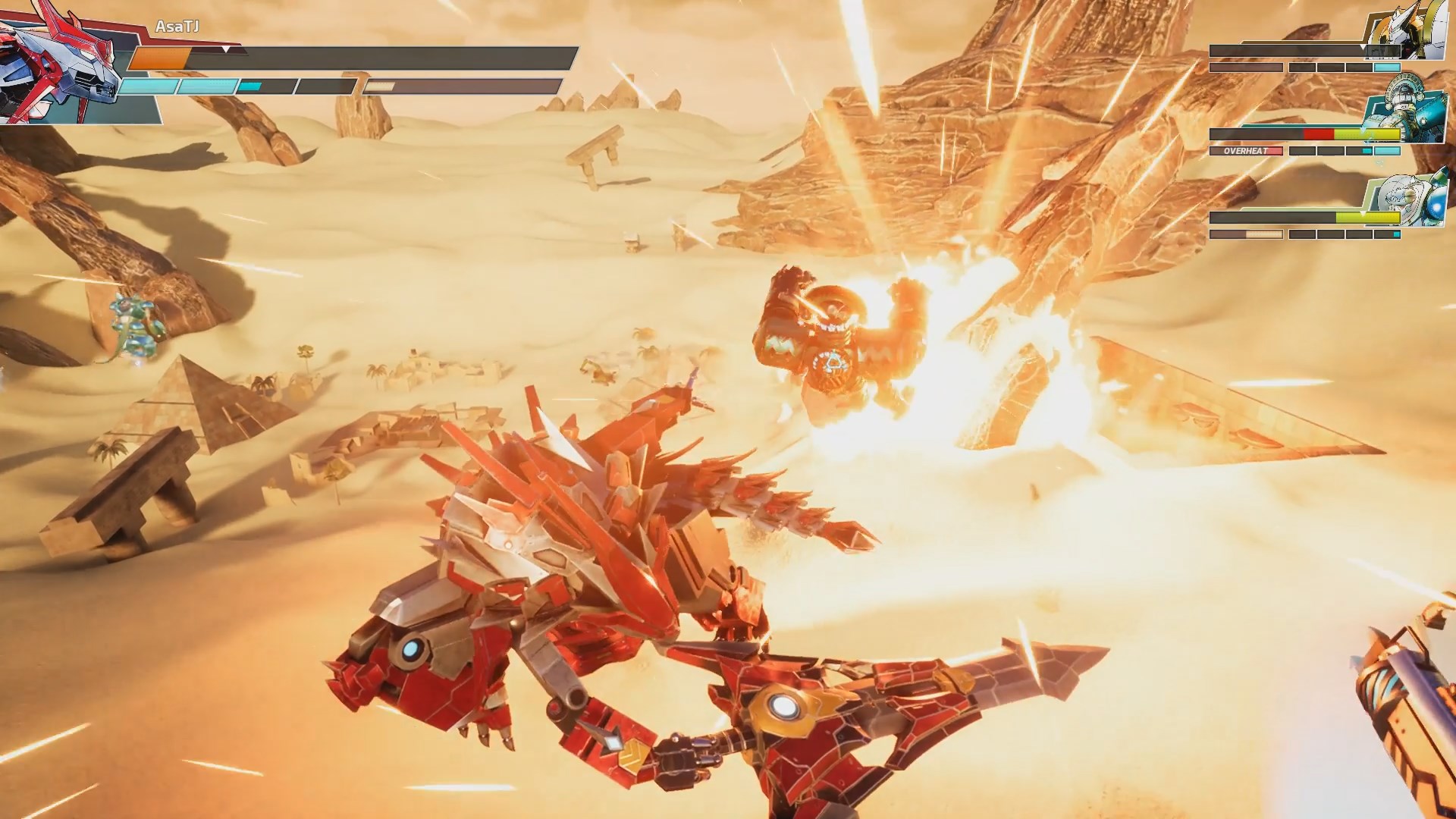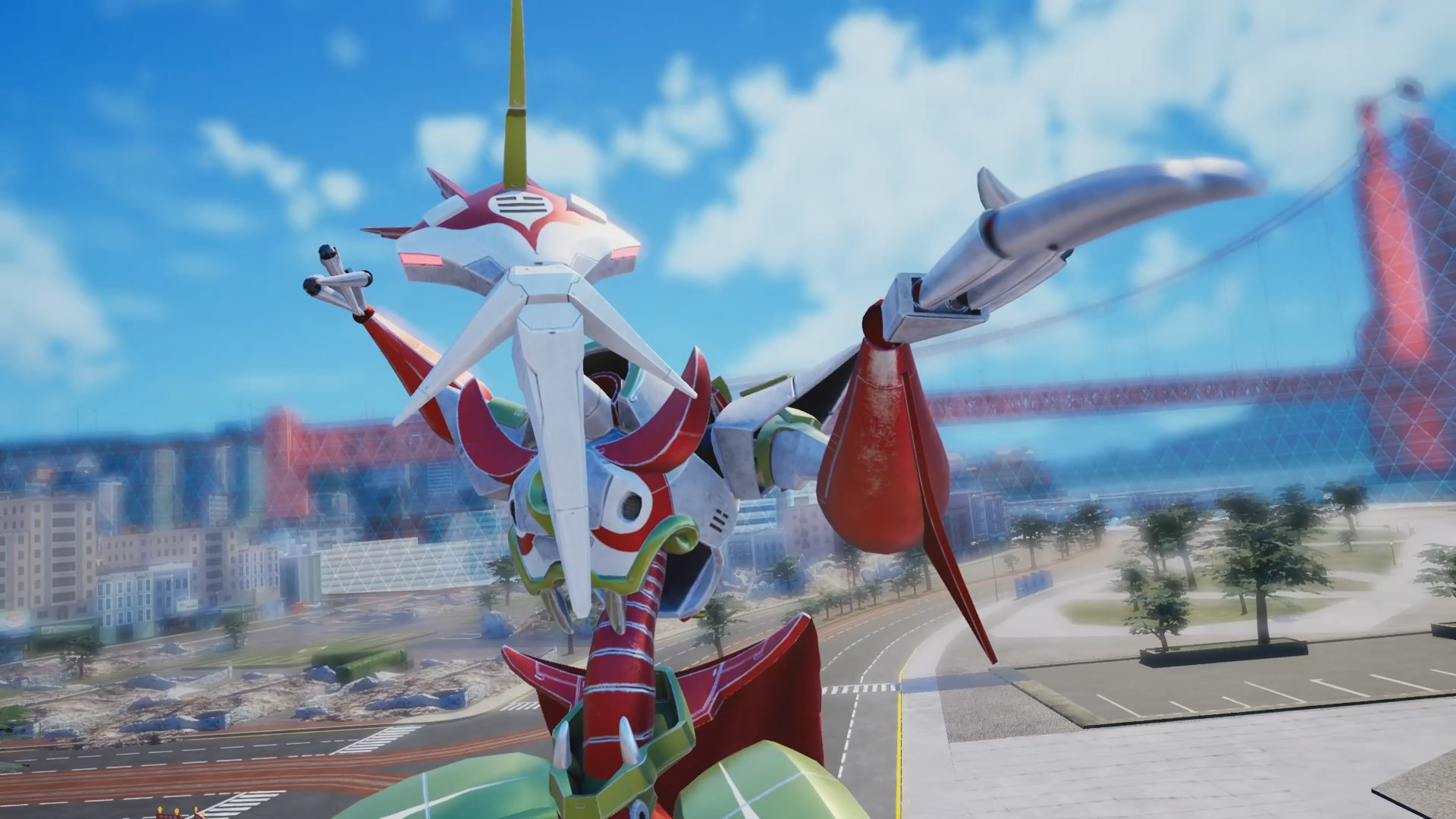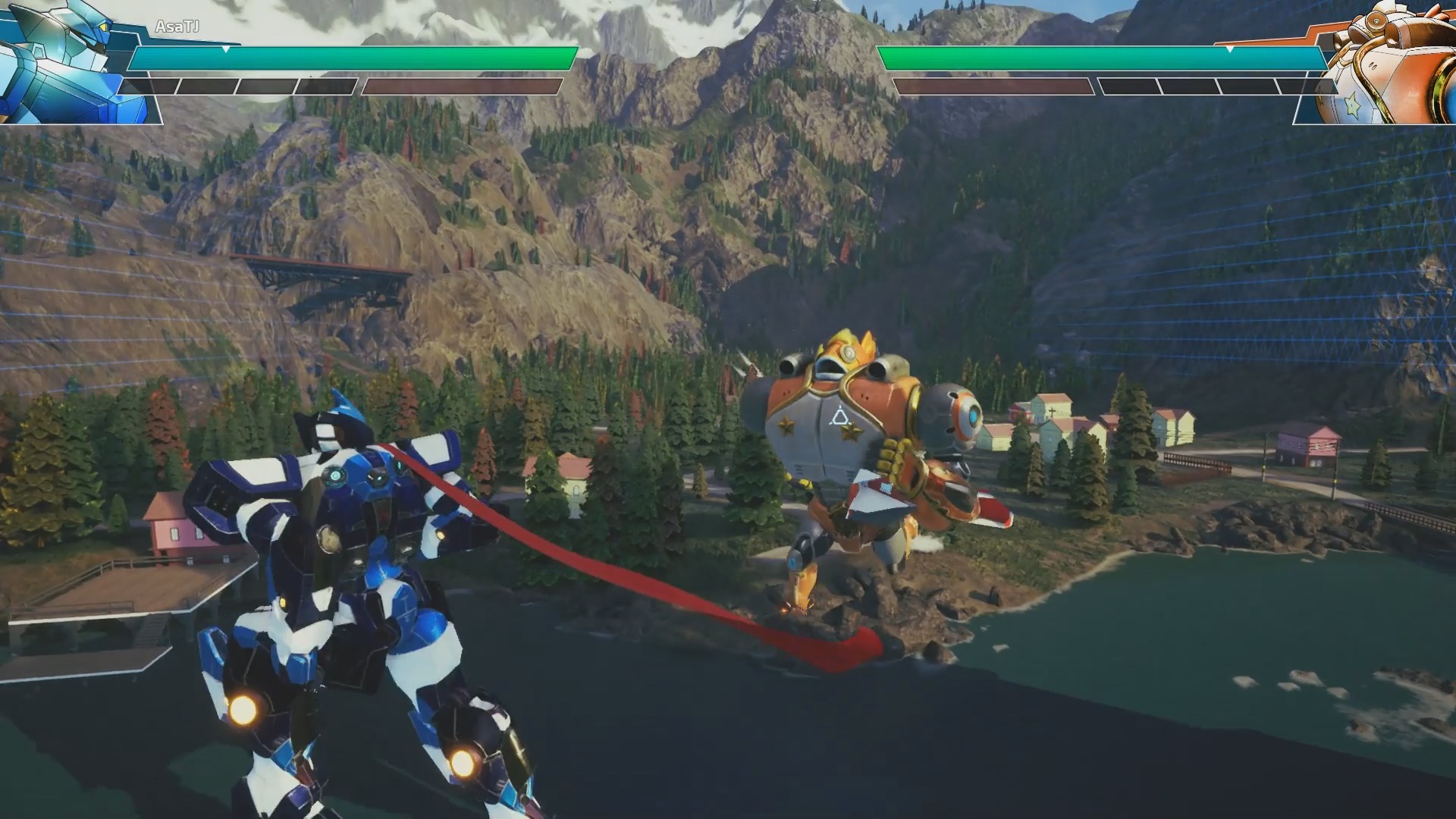An ideal mecha fighting game ought to have a few key elements: jetpacks, power swords, an utter disregard for property damage, and enough chrome to blind casual observers. Override: Mech City Brawl checks all of those boxes, putting you behind the controls of one of 12 different fighting robots in 1v1, 2v2, or up to 4-player free-for-all throw-downs. There are also PvE singleplayer and co-op modes planned, but they weren’t available in the build I played.
The stars of Override are its dozen robotic contenders, each sporting a very distinct style and silhouette, tons of personality, and a suite of unique special moves. I especially liked Shifu, a spindly, metallic kung fu master who kind of reminds me of Phong from the classic '90s CGI cartoon Reboot and dishes out lighting-quick strikes with far greater force than his slender chassis would suggest. There’s also Metageckon, a lumbering reptilian bot who can roll up into a ball and wreak havoc across the map, and Setesh, an Egyptian-inspired giant who hits like a jet liner.

The core combat is fairly simple and a bit slow compared to other fighting games. Playing on a gamepad, the left and right shoulder buttons are used to punch with your left or right arm (or to use a randomly-spawned weapon you’ve picked up from the map like a laser rifle or beam sword). The left and right triggers execute a left or right leg kick. Holding down any of these four buttons for about a second produces a charged-up version, including a special left kick unique to each mech such as a leg sweep or a flying front kick flurry.
It can start to feel like a boxing match in which each competitor is trying to bait the other into triggering a counterattack.
You’re vulnerable to a normal attack interrupting the animation while charging, though, so it’s important to time these heavy blows carefully. Button-mashing is discouraged by an overheat bar that will render you unable to attack for a couple seconds if you throw too many blows in a short period of time.

Each mech also has a jetpack that can be used to execute aerial dive attacks, though I never quite got the timing down right on those. You also have access to a quick dash that can be used to close distance to an opponent, or back up far enough to charge a heavy attack. A front-facing block can be deployed that will nullify most normal attacks, though it can be broken by heavy strikes.
Things start to get really tactically interesting when you learn that having your shield up and hitting an attack button right in the split second before an opponent breaks your guard allows you to execute a counter for huge damage and knockback. Against a skilled opponent or high-level AI, it can start to feel like a boxing match in which each competitor is trying to either bait the other into triggering a counterattack opportunity, or land a heavy blow to break a guard at a moment that the defensive fighter won’t be able to execute a counter fast enough.

The last layer is a special meter that builds up as you fight, which can be spent to execute any of the three to four unique special attacks for each mech. Metageckon can shoot laser beams out of his mouth Godzilla style. Shifu has a vicious uppercut that launches himself and an enemy into the air, allowing a short window of high-altitude beatdown. These attacks lend a lot of variety and personality to different matchups, and knowing what your enemy’s specials are was often a key to victory once I started learning my way around the roster.
Keep up to date with the most important stories and the best deals, as picked by the PC Gamer team.
When very low on health, each mech can also execute an ultimate move, complete with a rad, anime-style cutscene, that can end the match immediately. I found I had to be careful not to trigger it when it would put my enemy’s health into range for using their own ultimate, though, as that often meant certain defeat. It creates an interesting high noon sort of feel to the end of the match, where holding out on using your special longer than your opponent can net you a win.
While the moment-to-moment fighting sometimes felt too sluggish to be highly satisfying, there are a lot of little complexities to Override that made me want to round up some friends and duke it out to see if it becomes more than the sum of its parts. I also look forward to trying out more of its maps, as only about half were available in the preview build—showing a good variety of terrain from an Egyptian dig site with a full tomb sub-level, a king-of-the-hill style moon base, and a cramped Norwegian valley that felt like a knife fight in an elevator most of the time. You’ll be able to check it out yourself December 4.
Len Hafer is a freelancer and lifelong PC gamer with a specialty in strategy, RPGs, horror, and survival games. A chance encounter with Warcraft 2: Tides of Darkness changed her life forever. Today, her favorites include the grand strategy games from Paradox Interactive like Crusader Kings and Europa Universalis, and thought-provoking, story-rich RPGs like Persona 5 and Disco Elysium. She also loves history, hiking in the mountains of Colorado, and heavy metal music.

